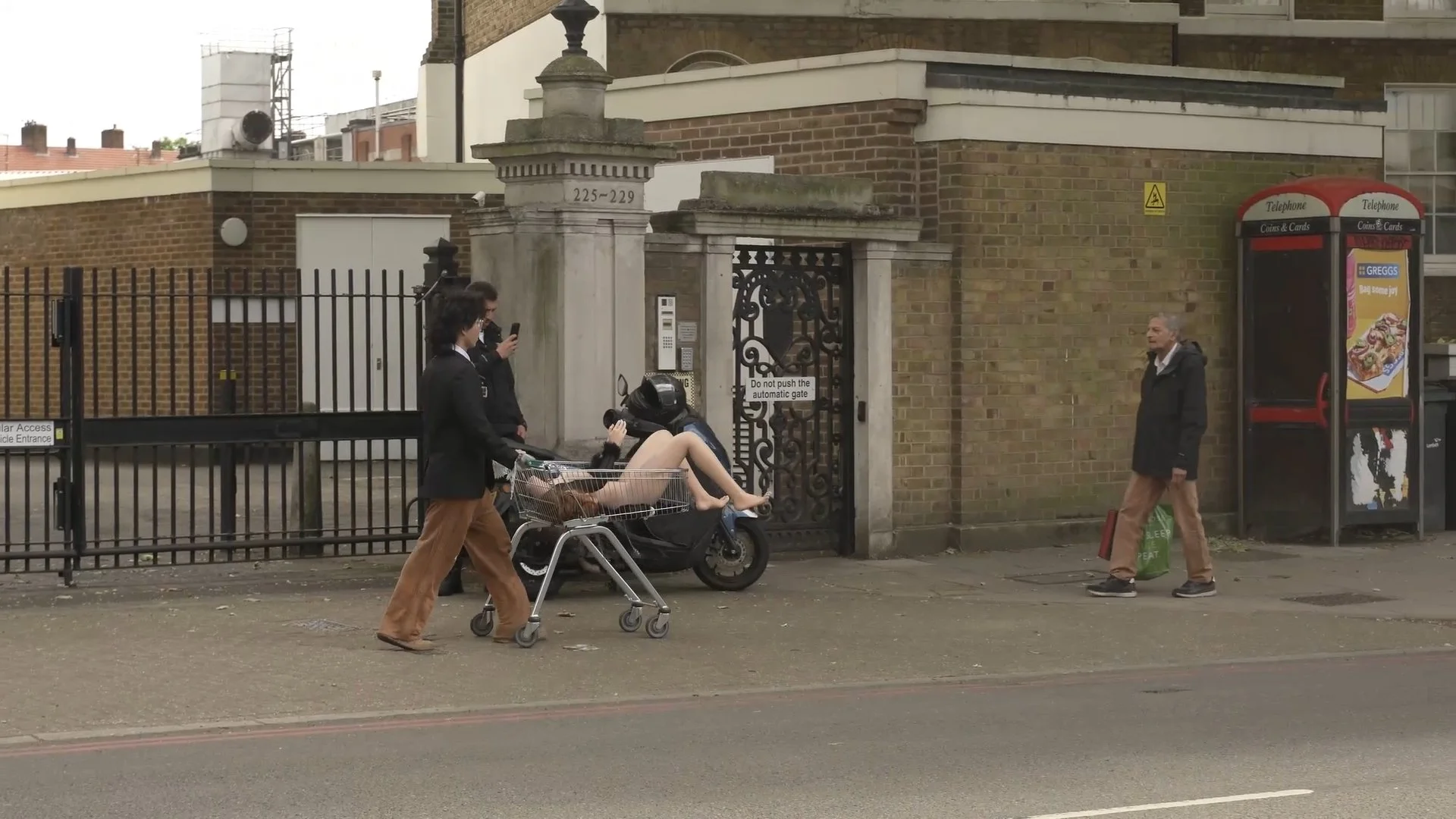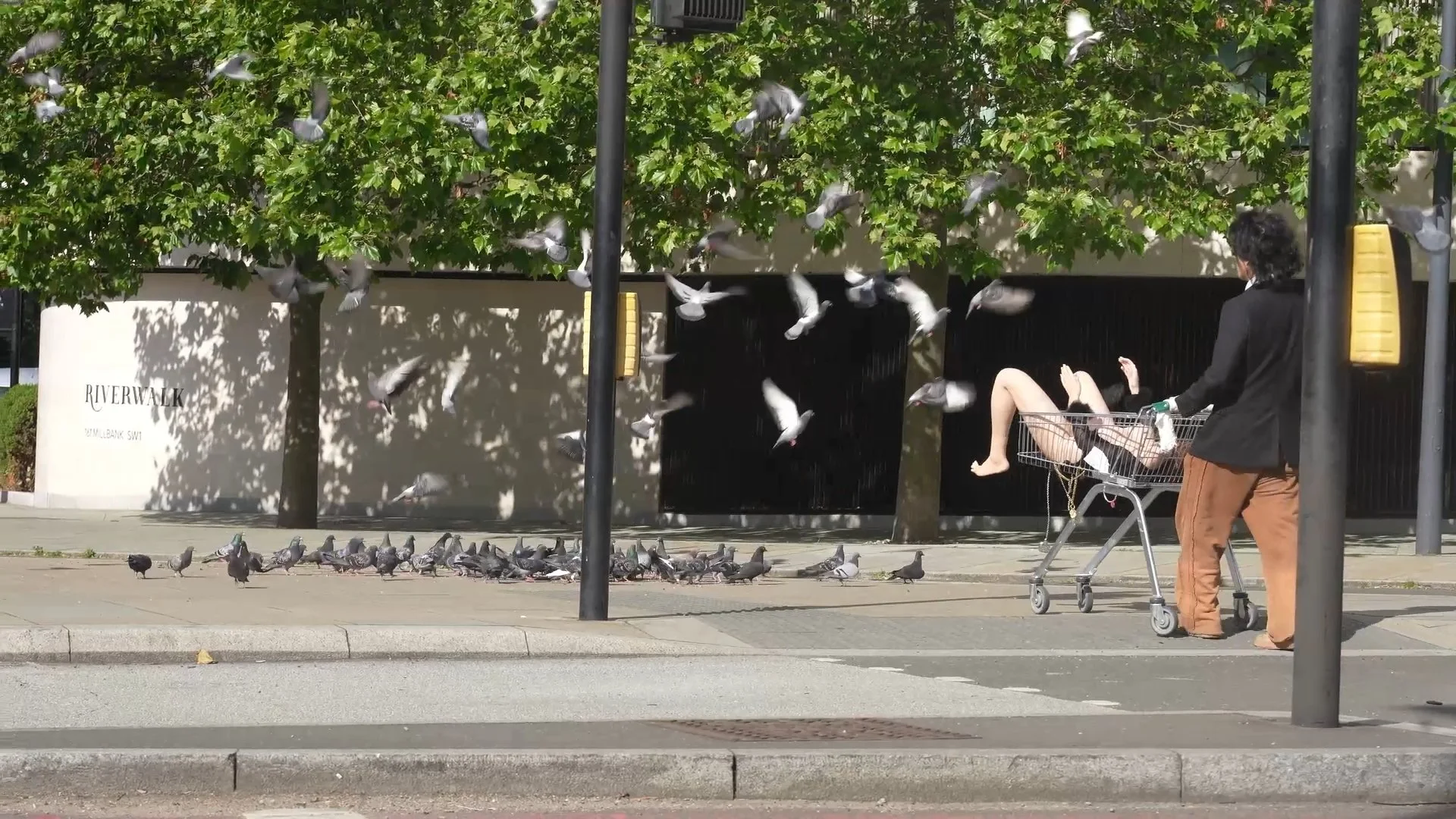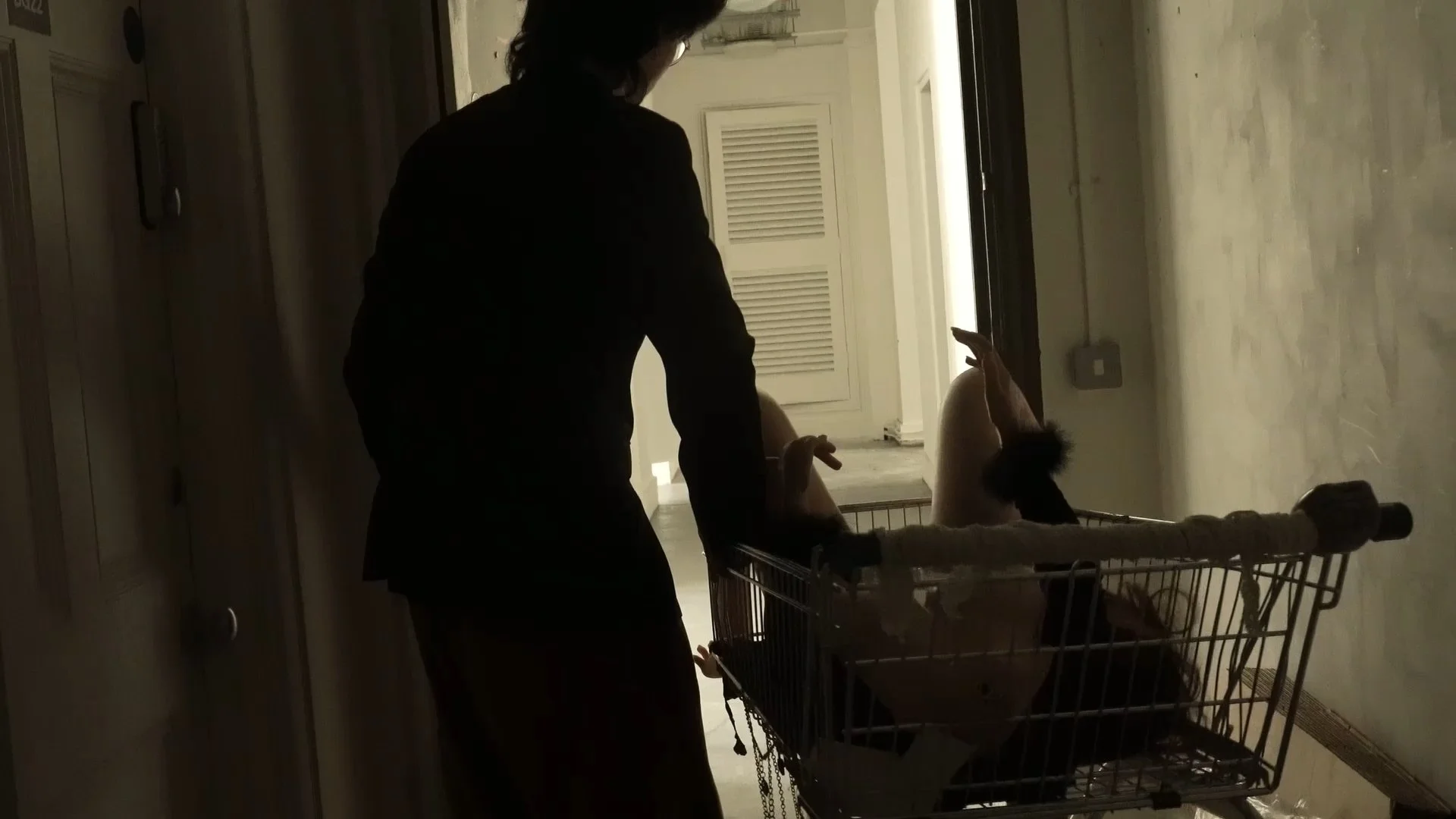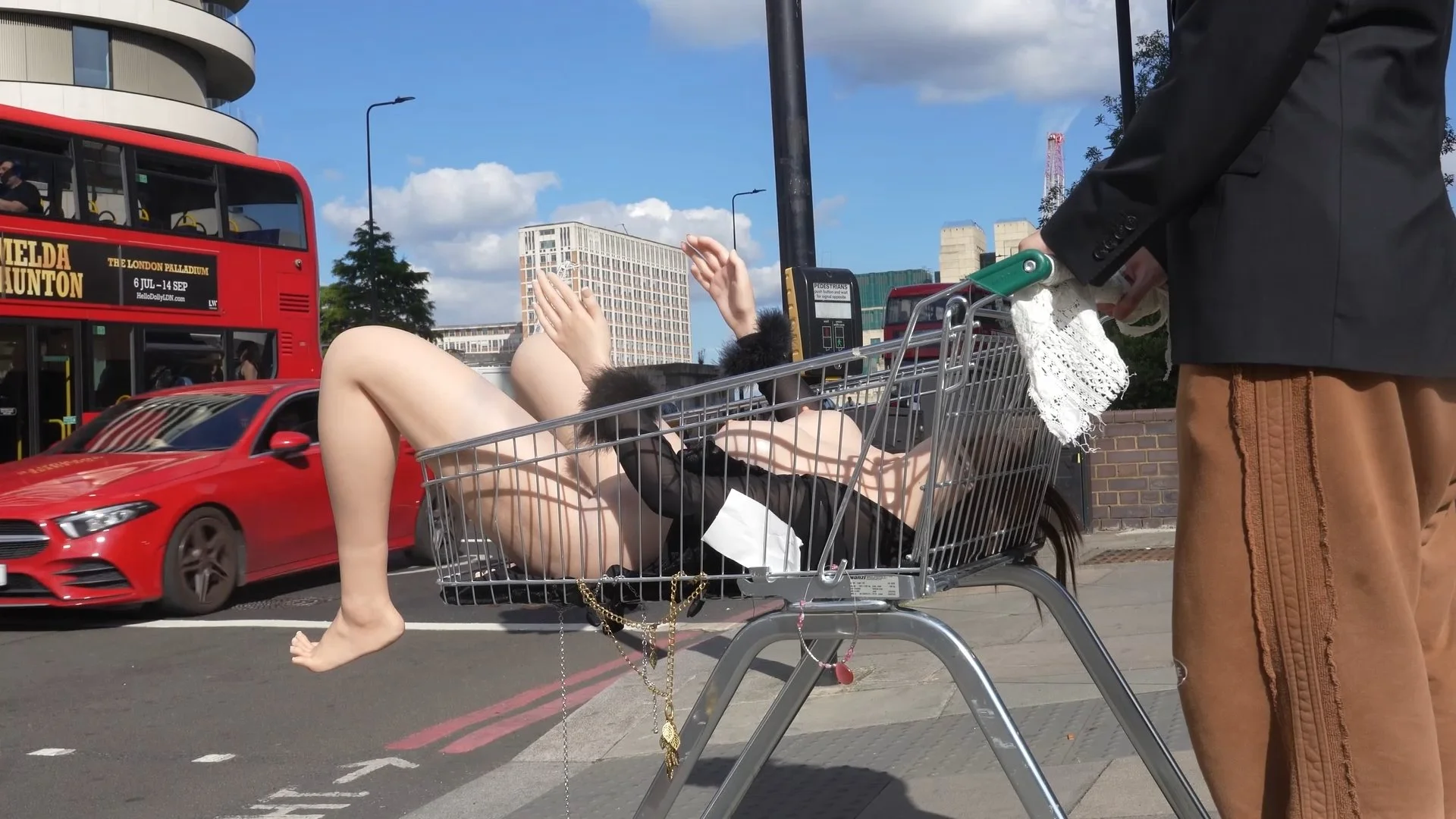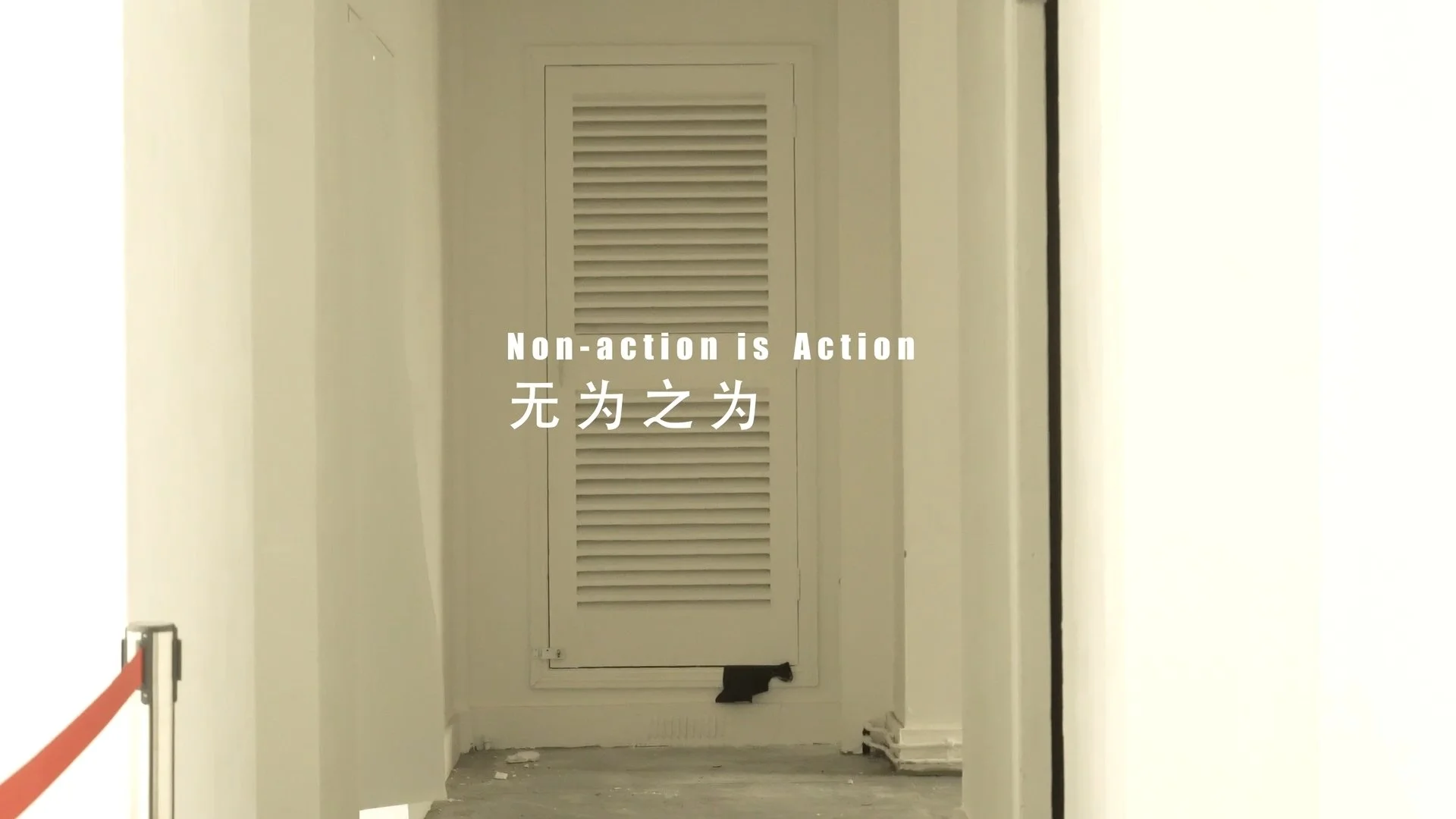
A response- -Non Action is Action
click to watch full video
This is an artistic action in response.
When I heard Lio's description of "I want to create some passive displays," this project naturally came to my mind. Lio's project initially involved a sex doll with legs spread wide open, displaying its genitals to the audience, and a mirror placed at the vaginal opening so that those who approached would see their own face, embodying the concept of the "mirror of desire." She originally intended for this project to be static rather than provocative and invasive. "The Position of Inaction" is based on this project—I decided to continuously film the process of transporting this sex doll from home to the exhibition site in a supermarket shopping cart.
Because it is impossible to find true commonality among the many artistic activities. In this regard, historical records are unreliable (as Benjamin said: this is the history of the victors). However, we can seek minimal commonality and return to its genesis. Here, I choose the direction of “creative desire” as a kind of desire and then compare it to “sexual desire,” finding their commonalities and differences in social participation.
Firstly, fundamentally, desire cannot be fully integrated into any symbolic system and power structure and is related to subjectivity. For power entities, individual desire is always an inert existence. Its mere existence belongs to the real and declares the impotence of the symbolic system. For the symbolic system, desire has always been “resistant.” If it is a revolutionary party, the political resistance and the resistance of desire may cooperate, but this cooperation remains central and politically focused. After coming to power, it must face the problem of handling this “resistance.”
From the Soviet historical experience, extending the “revolutionary” and “revolutionary enthusiasm” that symbolized the legitimacy of the regime beyond the revolution itself became a troubling issue. This eventually led to a revolutionary stance towards an abstract object, an abstract “Western world.” This is reflected in the differentiation of Soviet-era artists, between those incorporated into the symbolic order and those creating for themselves deemed “anti-regime.” The latter mostly claimed their aim was apolitical, but this non-cooperation of desire would still be seen as resistance by the symbolic order. This state has existed since early civilizations. As mentioned in “The Ritual Process: Structure and Anti-Structure,” the problem of twins exemplifies this: desire occurs, creative behavior occurs, twins are born. How does the symbolic order handle its impotence? Like the handling of the twin problem, modern society has derived two models: exclusion (political censorship) and suspension and deception (post-ideological ideology, deceiving both itself and the object).
At this point in the discussion, we can see the root of my assertion that “the passivity of creative behavior is its resistance.” Participating in resistance political movements is cooperation between resistances, but the resistance of art is not merely given by such activities. Its resistance is relative, granted by the symbolic order, but due to the long-term presence of the symbolic order in human society, this passive resistance has always existed.

